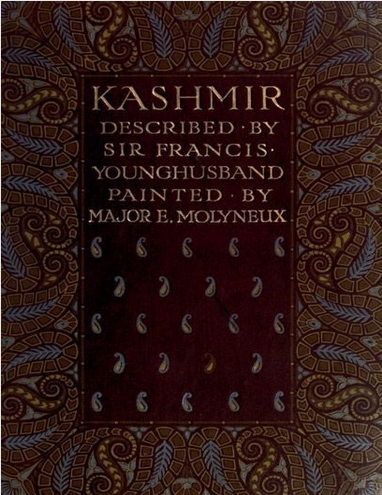hello, today i writting “The Scarlet Letter Full Book Summary” by Nathaniel Hawthorne
Nathaniel Hawthorne’s” The Scarlet Letter” is a dateless classic that delves into the complications of mortal nature, morality, and the consequences of societal judgment. Set in 17th- century Puritan Massachusetts, the new revolves around Hester Prynne, a woman condemned for the sin of infidelity, as represented by the scarlet’ A’ she’s commanded to wear.
Hawthorne’s narrative adroitly weaves together themes of guilt, shame, and the inner fermentation of his characters. Hester Prynne emerges as a strong and flexible figure, scuffling with her discipline and the insulation it brings, while refusing to expose the identity of her mate in sin.
The mysterious and miscarrying figure of Arthur Dimmesdale, the city’s deified minister, adds depth to the plot. His internal conflict and insincerity, torn between private guilt and public piety, is a compelling disquisition of the mortal psyche.
”
The Scarlet Letter” isn’t simply a story of discipline and shame but an disquisition of the mortal condition, pressing the dangerous goods of judgment, the hunt for redemption, and the complications of love, all within a rigid and enduring society.
Hawthorne’s rich language and pictorial descriptions paint a pictorial picture of Puritan New England, adding to the atmospheric depth of the novel. His disquisition of the interplay between public commination and private agony is both poignant and study- provoking.
The novel’s enduring applicability falsehoods in its disquisition of dateless themes — individuality against societal morals, the conflict between inner heart and external prospects, and the lasting goods of guilt and redemption.
”
The Scarlet Letter” remains a masterpiece, inviting compendiums to consider the complications of mortal geste
, the consequences of judgment, and the pursuit of particular deliverance in the face of societal commination. It’s a book that continues to allure and provoke contemplation, making it an essential read for those who appreciate profound studies of the mortal condition.
Absolutely! Then is an expanded review of Nathaniel Hawthorne’s classic,” The Scarlet Letter”
Nathaniel Hawthorne’s” The Scarlet Letter” is an unforgettable masterpiece that traverses the complications of mortal nature, morality, and societal conventions in 17th- century Puritan America. The new centers on the story of Hester Prynne, a woman condemned for the sin of infidelity, whose life becomes entangled in the scarlet hallmark she must wear as a symbol of her transgression.
Hawthorne’s narrative prowess shines through his depiction of characters like Hester, who, despite her public smirching and insulation, maintains an inner strength and adaptability that defies the rigid constraints of her society. Her turndown to expose the identity of her child’s father epitomizes her commitment to bearing the consequences of her conduct with grace and fiber.
Arthur Dimmesdale, the recognized minister tortured by his retired guilt, provides a stark discrepancy to Hester’s public shame. His internal anguish and struggle with the contradiction between his public persona and private suffering render him a woeful figure, embodying the conflict between particular morality and societal prospects.
The scarlet letter ‘ A ’ symbolizes not only infidelity but also metamorphoses into colorful interpretations throughout the novel, signifying ‘ suitable, ’ pressing Hester’s adaptability and capability. It serves as a visual incarnation of the pressure between social judgment and particular identity, inviting contemplation on the subjectivity of moral absolutes.
Hawthorne’s jotting is a testament to his mastery of language and imagery, painting a pictorial depiction of prim New England. His descriptions of the society’s strict moral law, juxtaposed with the emotional turbulence and hidden solicitations of the characters, produce a rich shade that resonates across time.
The novel’s enduring significance falsehoods in its disquisition of dateless themes the contradiction between public scrutiny and private guilt, the hunt for redemption amidst societal commination, and the intricate nuances of love and sin. It forces compendiums to question the infallibility of societal morals and consider the complications of the mortal condition.
” The Scarlet Letter” stands as a compelling memorial of the continuing impact of guilt, the conflict between individuality and societal prospects, and the pursuit of particular redemption. Its profound perceptivity into the mortal psyche and the moral dilemmas faced by its characters insure its place as a definitive work of literature, offering an enduring glass to humanity’s eternal struggles. Hawthorne’s capability to draft a narrative that remains applicable and study- provoking across generations solidifies its status as a erudite classic that continues to allure and provoke soul-searching.
Clearly! Then is an extended review of Nathaniel Hawthorne’s” The Scarlet Letter”
Nathaniel Hawthorne’s” The Scarlet Letter” is a narrative that transcends time, probing deep into the intricate and dark recesses of mortal psychology. Set against the stark background of prim Massachusetts in the 17th century, this erudite gem encapsulates the story of Hester Prynne, a woman who bears the discredit of wearing the scarlet letter’ A’ — a symbol of her supposed sin of infidelity.
What makes this new enduringly compelling is its multilayered disquisition of guilt, love, shame, and the complexity of mortal feelings. Hester Prynne emerges not simply as a wrongdoer but as a flexible woman, recalcitrant in the face of ostracization, holding her head high despite the weight of society’s despisement. Her turndown to reveal the identity of her child’s father reflects her inner strength and determination.
Arthur Dimmesdale, the tortured minister and Hester’s secret nut, presents an interesting character study. His internal struggle, torn between the saintliness projected by society and his retired guilt, brings forth the theme of retired guilt eating away at the soul. His suffering, hidden from public view, reveals the profound impact of internal fermentation.
The scarlet letter itself serves as a multifaceted symbol. To some, it signifies infidelity and shame, yet to others, it transforms into” suitable,” signifying Hester’s strength and adaptability in the face of adversity. Hawthorne consummately uses this symbol to reflect the complications of judgment, societal constraints, and the nebulosity of moral canons.
The narrative is concentrated with philosophical reflections and moral dilemmas, exploring the themes of sin, redemption, and the natural nature of mortal excrescencies. Hawthorne’s prose is rich, suggestive, and filled with pictorial descriptions of the austere Puritan society, which serves as a poignant discrepancy to the pictorial feelings stewing beneath the face.
What continues to reverberate is the novel’s dateless applicability. It serves as a memorial of the enduring conflict between particular solicitations and societal prospects, the torment of concealed guilt, and the hunt for redemption.” The Scarlet Letter” challenges compendiums to contemplate the intricate interplay of sin and society, the individual versus the collaborative, and the deeply embedded struggle between the public persona and the private tone.
Hawthorne’s disquisition of the mortal psyche and his artfulness in weaving a narrative that remains applicable centuries after its publication solidify” The Scarlet Letter” as a erudite masterpiece. Its profound themes and dateless perceptivity into the mortal condition insure its place as a study- provoking and enduring work of literature.





My brother suggested I may like this web site. He was once entirely right.
This submit actually made my day. You cann’t imagine just how much time I
had spent for this information! Thank you!
It’s very straightforward to find out any matter on web as compared to books, as I found this post at
this site.